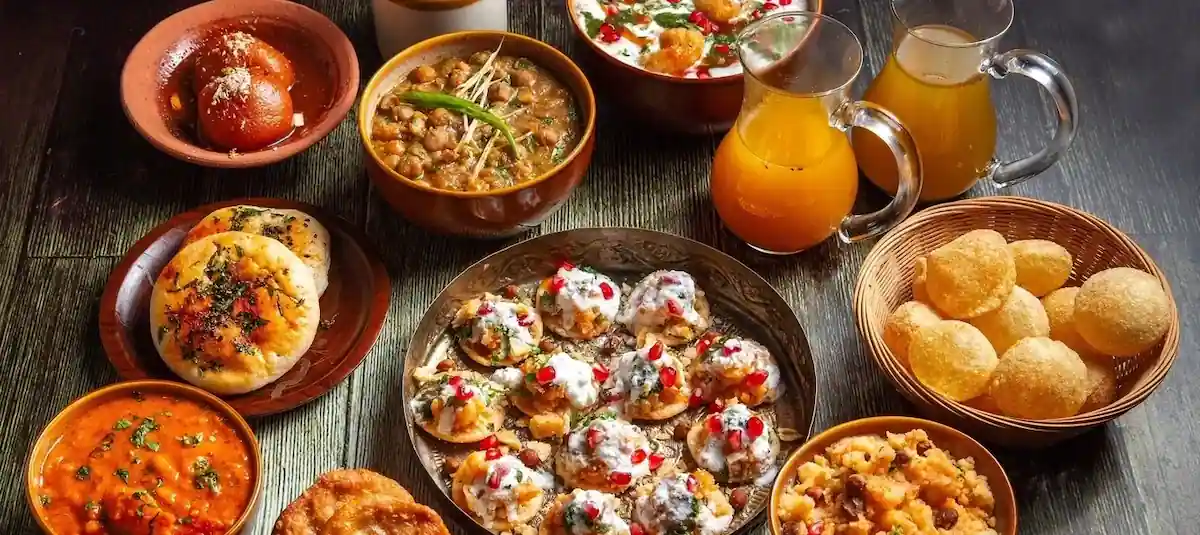
The biggest part of learning about a place’s culture for me is its culinary arts. I feel that each dish is not only appetizing, but also carries stories and traditions that are embedded in the community’s identity. Food for me is a window into the history, values and lifestyle of a community. When visiting traditional markets, I found that these places are potential centers for strengthening the preservation of the diversity of authentic Indonesian flavors, both from a culinary and cultural perspective. At the market, I also felt a strong social aspect, where seasonal ingredients not only enrich dishes, but also strengthen community ties and preserve culinary heritage.
As someone who admires Javanese culture, I am very fascinated by the traditional markets in Solo which are rich in authentic culinary delights as a local identity. Here, I can see various typical dishes that have been on display for a long time, such as nasi liwet, serabi, and gudeg, each of which has its own uniqueness and distinctive taste. The uniqueness of the Solo traditional market which is inseparable from its people and culture makes it a very popular place, both for buying and exploring culinary delights. For me, tasting food in certain areas in Solo is a fun challenge, considering the many different flavors on offer.
I consider this culinary experience at a traditional market to be the best way to enjoy the authentic flavors of Solo. In this article, I want to examine more deeply how traditional markets provide a variety of culinary delights in the city of Solo, and of course this has value as a barometer of cultural and local identity that is preserved in the form of food.
The Uniqueness of Culinary in Traditional Markets of Solo, Central Java
As a culinary lover, I feel that the traditional markets in Solo, Central Java, are heaven for anyone who wants to taste the uniqueness and authenticity of local flavors. Every time I visit this market, I am greeted by the tempting aroma of various typical dishes ready to pamper my taste buds. Here, I not only enjoyed the food, but also delved into the history and unique culture of the local area. I was fascinated by culinary offerings that have their own characteristics, from traditional foods that have been passed down from generation to generation, to cooking methods that still maintain traditional methods. What’s even more interesting, all the dishes at this market use fresh and high-quality ingredients, making every bite taste special. This experience really enriched my knowledge about local culinary delights and made me love Indonesia’s rich culture even more.
Variety of Signature Dishes
The Solo traditional market has always been one of the culinary attractions that I cannot miss every time I visit this city. Here, I found a variety of delicious specialties. The two most famous markets, namely Klewer Market and Gede Market, serve a variety of dishes that have become Solo’s culinary icons. One of the things I like most is nasi liwet, rice prepared with coconut milk and spices, served with side dishes such as chicken, eggs and vegetables. The rich taste and tempting aroma make me always want to come back. Apart from that, I also couldn’t miss Serabi Solo, a rice flour and coconut milk pancake that is famous for its sweet and savory taste. And of course, gudeg made from young jackfruit slow cooked in coconut milk and spices is a must-try dish. For me, these foods are not only delicious, but also very tied to history and culture which makes the culinary experience in Solo even more memorable.
Traditional Cooking Methods
These markets also utilize traditional cooking techniques which preserve the original taste of the food. Many vendors still use traditional cooking techniques, such as wood stoves or charcoal fires, that have been passed down through the generations. Not only does it enhance the flavor, but it adds a unique smell to all the dishes. For example, the hours-long, low-heat cooking of gudeg delivers complex flavor and texture. With these ways of traditional cooking, vendors at Solo traditional markets can keep the authentic and tight quality of taste from every dish they sell.
Utilization of Fresh and Natural Ingredients
This uniqueness for culinary offerings in traditional market of Solo is in used for fresh and natural ingredients that directly sourced from local farmer or producer. In these markets, many vendors sell vegetables, fruits and other food that is harvested the same day. Not only does this guarantee the freshness and quality of ingredients, while also supporting the local economy and sustainable agriculture. Fresh vegetables used in pecel or urap, for example, provide a crisp and natural taste. Likewise, the use of local ingredients also imparts a more authentic flavor, since every ingredient has its own unique characteristics determined by the local soil and the surrounding climate conditions.
The Benefits of Exploring Culinary Experiences in Traditional Markets
Exploring culinary experiences in traditional markets offers various advantages that not only satisfy the palate but also positively impact the surrounding community and environment. From more affordable prices to supporting the local economy and the opportunity to discover unique foods, traditional markets present an attractive option for anyone wanting to experience authentic cuisine. Here are some key benefits of exploring culinary offerings in traditional markets.
One of the most striking advantages of exploring culinary experiences in traditional markets is the more affordable prices compared to restaurants or modern culinary tourist spots. In traditional markets, visitors can find a variety of delicious dishes at much friendlier prices. For instance, a serving of nasi liwet complete with side dishes can be found at a very reasonable price, significantly cheaper than in restaurants. This allows visitors to sample various types of food without having to spend a lot of money. With such affordable prices, traditional markets become an ideal place to enjoy local cuisine without breaking the bank.
Tips for Exploring Culinary Experiences in Traditional Markets
Traditional markets offer an exciting experience exploring various culinary choices. To ensure a pleasant and delightful visit, here are some tips on how to enjoy the traditional market: arrive early and get the best selection. Keep in mind that everything is ready for you to grab and go, absolutely no queues or waiting lists. The best food markets and shops have a wide selection of food ready within an hour or two – getting distracted along the way can easily ruin your plans and rob you of your chance to taste them all. The morning markets are always vibrant as everyone is getting ready for the day, and that’s nothing you want to miss. So you should always start from going there while it’s quiet and slowly fill up. What’s that? Ask the locals for the recommendations wherever you go. If you are looking to try some quality nasi liwet the best you can find, as the locals – sure they would guide you right.
Cash: Bring the Proper Denomination in Cash
Markets receive cash, so be sure to have enough cash for your purchases. It’s best to have small denominations, as many vendors may not be able to provide change for larger bills. Change and little cash tend to provide for smoother and faster exchanges of money for food so you can spend more time eating instead of paying and fewer concerns whenever paying. So if you pay with cash, since vendors do check the price, sometimes you can bargain better.
Try Something New: Be open to new flavors and textures
Another fun part of visiting traditional markets is that you will get to try lots of new and unknown food; Also, be willing to taste dishes you haven’t yet tried; you may be surprised by how good they are. Traditional markets have a huge variety of different culinary experiences from unique textures to new flavors. Be it a spicy sambal, a sweet dessert or a savory snack, embracing new tastes is not only tackles your feeling of tastes, but can expand your culinary adventure and broaden your palate. Feel free to take a leap out of your comfort zone and enjoy the local food.
In Summary, experience good food you should go to traditional markets. This is a great way to experience the deep flavors and diversity of dishes that mirror local culture and history. These markets are not only about the food; visitors have the opportunity to connect with locals and to discover the traditions that influence the food scene.
So it is my hope that readers will do the same — seek out traditional markets more often when traveling. Food markets have always been a colorful window into a place’s culture and social milieu, in addition to just being about food. And each visit is full of discoveries and memories that extend far beyond what’s on the plate.
Finally, let us all pledge to save and support the local culinary heritage. This not only helps preserve cultural practices, but also supports local economies by sustaining traditional markets and the people who ensure these culinary traditions survive. In doing so, revel in the tastes, the tales, the links of legacy found in these traditional marketplaces, and honour the culture of culinary arts that these spaces create and sustain in our communities.
By: NILAM TRAHKUMALA
Write and Win: Participate in Creative writing Contest & International Essay Contest and win fabulous prizes.


